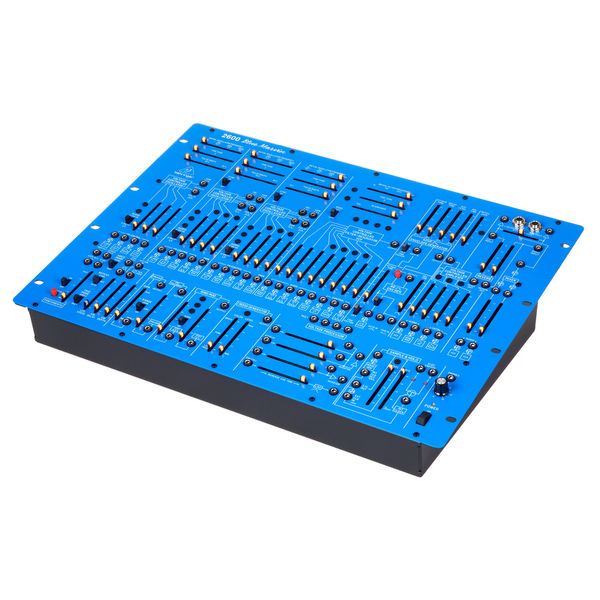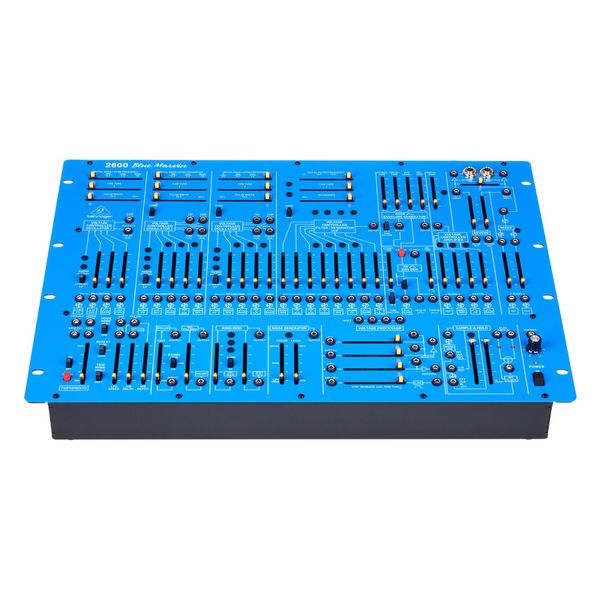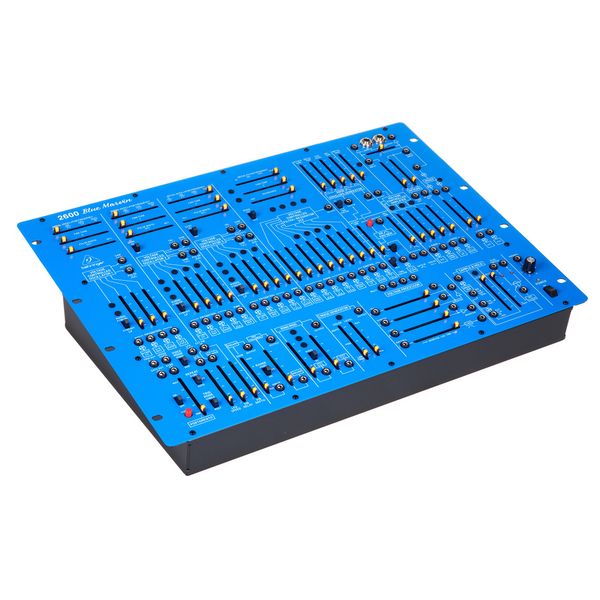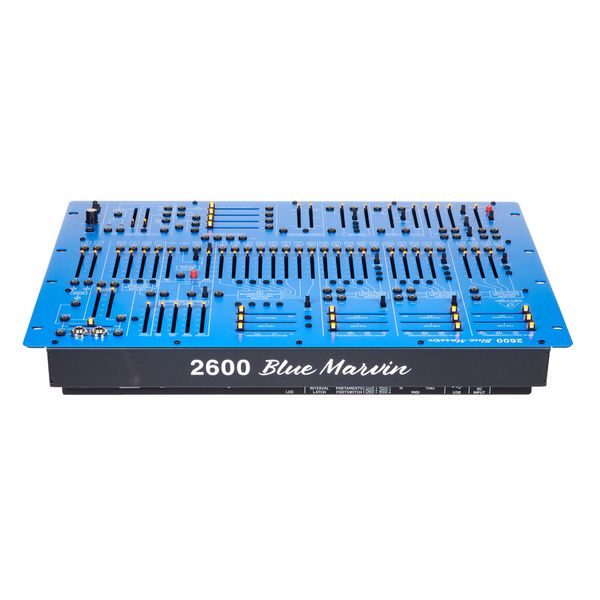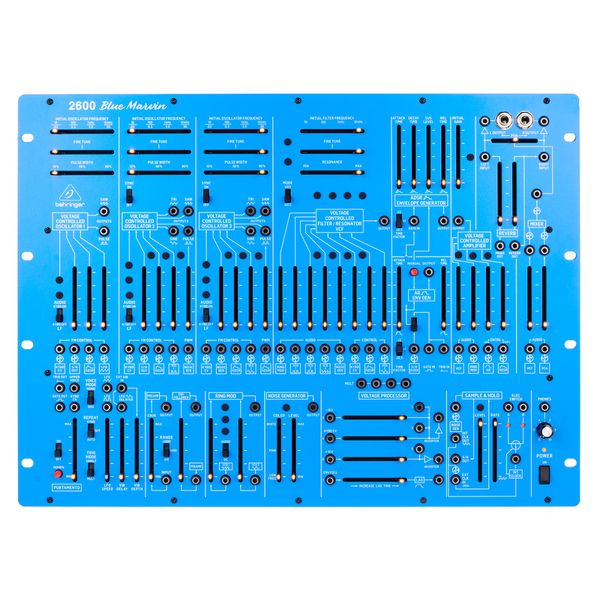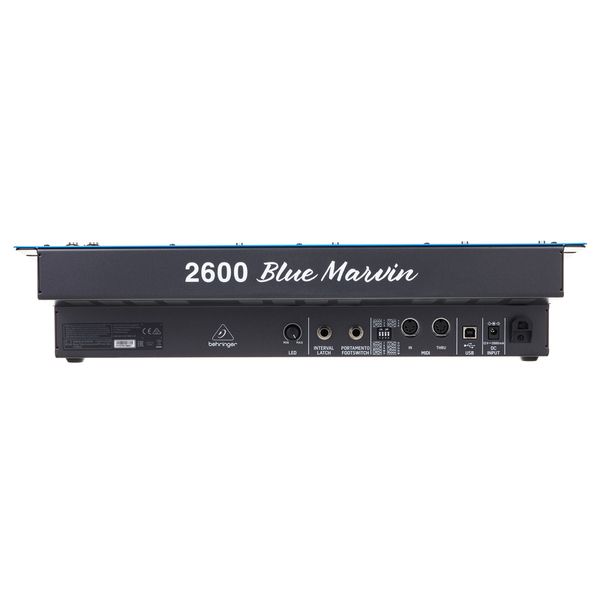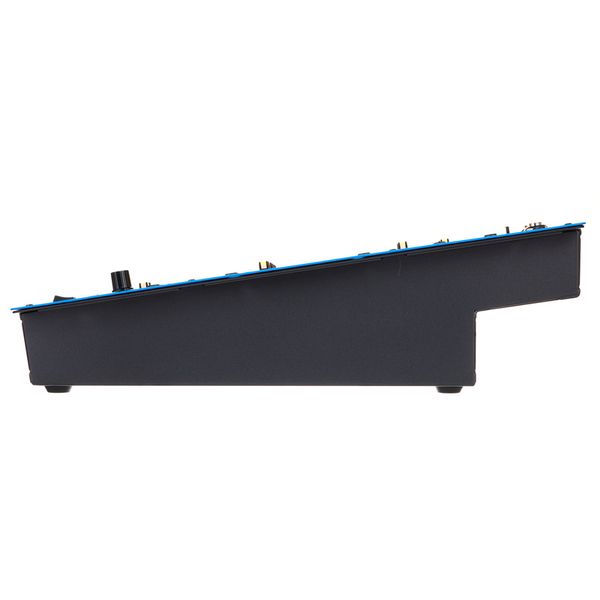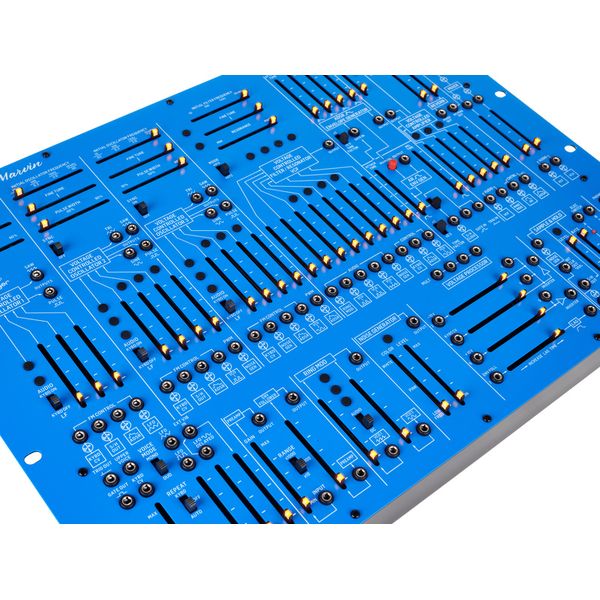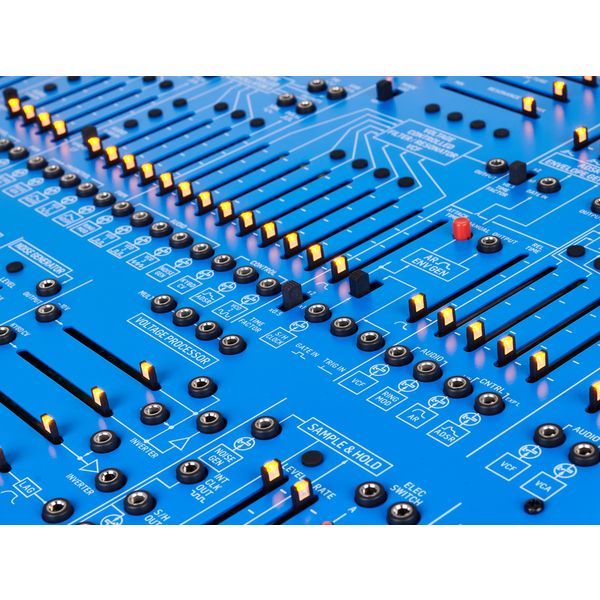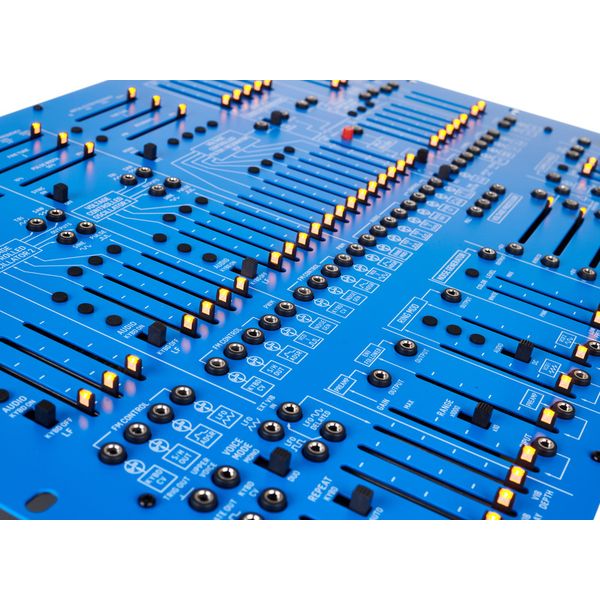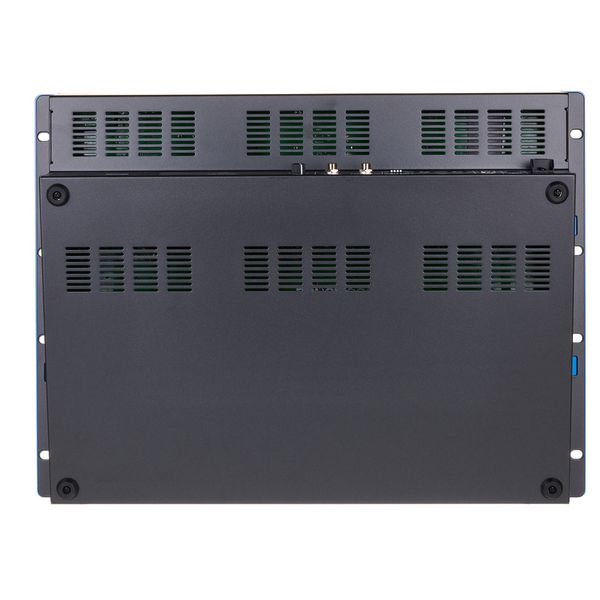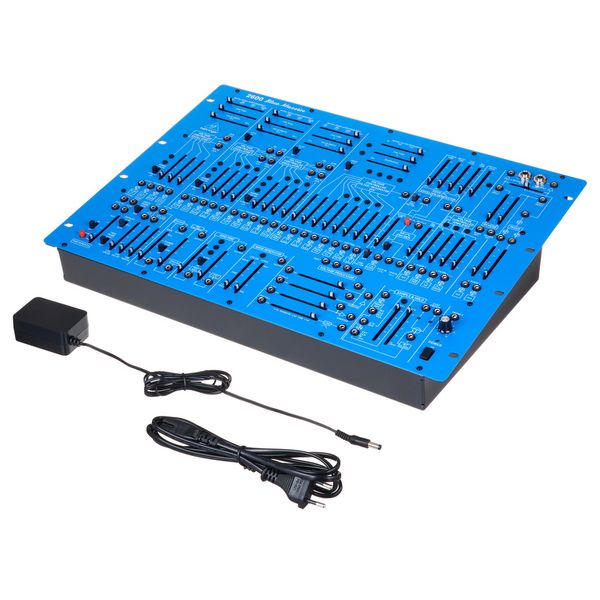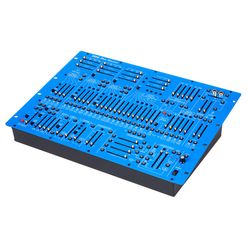Sintetizador analógico semimodular
- Edición especial con panel frontal azul y componentes seleccionados
- Monofónico
- 3 VCO's con ancho de pulso ajustable
- Oscilador 1 con salidas de diente de sierra y de onda de pulso
- Osciladores 2 y 3 con Oscillator-Sync conmutable y salidas para diente de sierra, triangular, sinusoidal y de onda de pulso
- Filtro de paso bajo con resonancia y dos características de filtro seleccionables
- Generador de ruido
- Modulador en anillo
- Etapa de 'Sample & Hold'
- Preamplificador y seguidor de envolvente para señales externas
- Procesador de voltaje
- Generador de envolventes ADSR
- Generador de envolventes AR
- VCA estéreo con panorama ajustable
- Reverberación de muelles mecánica incorporada
- Ruta de señal predefinida con capacidades de modulación extendidas y secciones completamente patcheables a través de conectores de 3,5 mm
- Salida de línea estéreo (2 jacks de 6,3 mm)
- Salida de auriculares estéreo (jack de 3,5 mm)
- Entradas de interruptor de pedal para Interval Latch y Portamento (jack de 6,3 mm)
- MIDI In / Thru
- Puerto USB-B (MIDI)
- Dimensiones (ancho x ancho x profundo): 482 x 356 x 108 mm (19"/8U)
- Peso: 5,1 kg
- Incluye fuente de alimentación externa (12V DC, 2000 mA)
- Color: Azul
Disponible desde
Marzo 2021
número de artículo
513579
Precio por
1 Unidad(es)
Construcción
19"
Voces de polifonía
1
Motor de sonido
Analógico
Interfaz MIDI
1x In, 1x Thru
Medio de almacenamiento
Ninguna
USB-anslutning
Sí
Efectos
Sí
Arpeggiator
No
Número de salidas analógicas
2
Salida digital
No
Display
No
Ampliaciones opcionales
Ninguna





